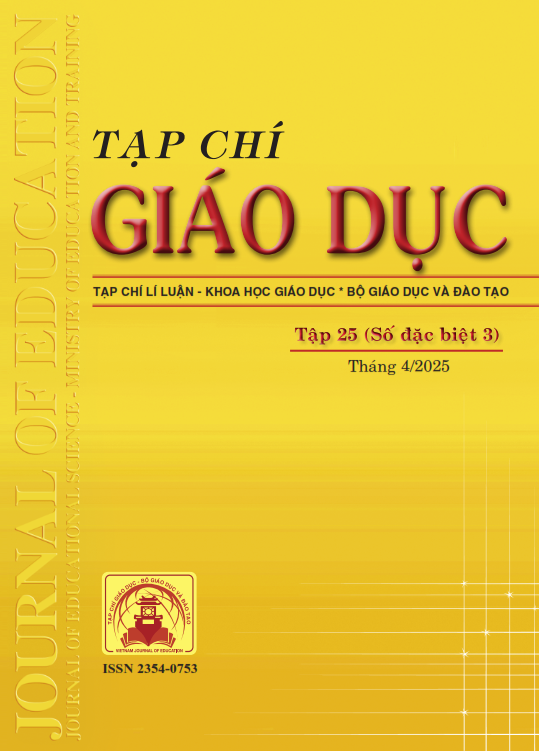Dạy học theo định hướng giáo dục STEM chủ đề “Bút vẽ cơ học” (Toán 6) nhằm phát triển kĩ năng sử dụng tiếng Anh học thuật cho học sinh
Tóm tắt
STEM education is being promoted in the 2018 General Education Curriculum to develop students' thinking skills and practical application abilities. Another approach is integrating English into STEM lessons, allowing students not only to enhance their scientific and technological skills but also to improve their language proficiency naturally, benefiting their learning and future lives. This study aims to clarify the role of STEM education in mathematics teaching while exploring opportunities to develop students' academic English skills through STEM instruction. The study is illustrated through a STEM lesson plan on the topic of “Mechanical Drawing Pen” (Grade 6 Mathematics). The lesson aims to help students understand and apply knowledge of geometric shapes in real-world contexts, integrate Scratch programming, and develop their academic English skills. The integration of STEM and English enables students to connect mathematics with practical applications while enhancing their technological and academic communication skills. However, to implement this approach effectively, investment is needed in teacher training, instructional materials, and a learning environment that encourages students to use English in scientific contexts.
Tài liệu tham khảo
Bộ GD-ĐT (2020). Công văn số 3089/BGDĐT-GDTrH ngày 14/8/2020 về việc triển khai thực hiện giáo dục STEM trong giáo dục trung học.
Bybee, R. W. (2013). The Case for Education: STEM Challenges and Opportunities. In NSTA (National Science Teachers Assocation).
Capraro, R. M., & Slough, S. W. (2013). Why PBL? Why STEM? Why now? An introduction to STEM project-based learning: An integrated science, technology, engineering, and mathematics (STEM) approach. In STEM project-based learning: An integrated science, technology, engineering, and mathematics (STEM) approach (pp. 1-5). SensePublishers Rotterdam.
Phạm Kim Chung (2017). Tổ chức dạy học các môn khoa học tự nhiên bằng tiếng Anh cho học sinh ở trường trung học phổ thông. Vietnam Science and Education, 145, 14-19.
Thomas, J. W. (2000). A review of research on project-based learning. San Rafael, CA: Autodesk Foundation.
Trịnh Thị Phương Thảo (2023). Tích hợp giáo dục bảo vệ, phát huy giá trị văn hoá dân tộc trong bài học STEM chủ đề “Các đường Conic” (Toán 10). Tạp chí Giáo dục, 23(13), 12-17.
Tu, P. T. T., & Huyen, P. T. T. (2020). Designing and Organising Stem Education Learning Activities for Students Based on the Environmental Topic in the Textbook “English 10”. TNU Journal of Science and Technology 225(03), 160-167. https://doi.org/10.34238/tnu-jst.2020.03.2651
Đã Xuất bản
Cách trích dẫn
Số
Chuyên mục
Giấy phép

Tác phẩm này được cấp phép theo Ghi nhận tác giả của Creative Commons Giấy phép quốc tế 4.0 .












